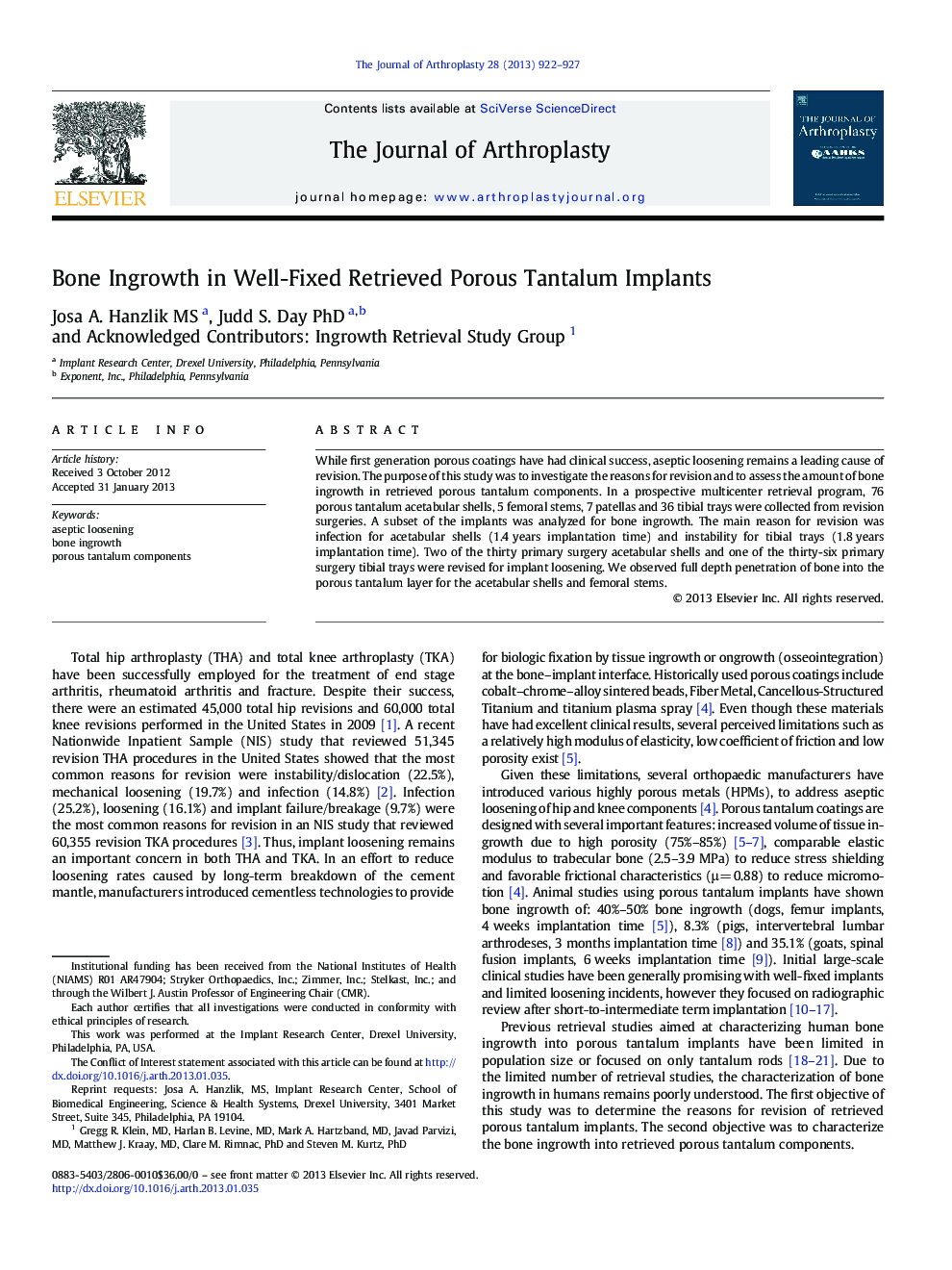| Article ID | Journal | Published Year | Pages | File Type |
|---|---|---|---|---|
| 6210177 | The Journal of Arthroplasty | 2013 | 6 Pages |
While first generation porous coatings have had clinical success, aseptic loosening remains a leading cause of revision. The purpose of this study was to investigate the reasons for revision and to assess the amount of bone ingrowth in retrieved porous tantalum components. In a prospective multicenter retrieval program, 76 porous tantalum acetabular shells, 5 femoral stems, 7 patellas and 36 tibial trays were collected from revision surgeries. A subset of the implants was analyzed for bone ingrowth. The main reason for revision was infection for acetabular shells (1.4Â years implantation time) and instability for tibial trays (1.8Â years implantation time). Two of the thirty primary surgery acetabular shells and one of the thirty-six primary surgery tibial trays were revised for implant loosening. We observed full depth penetration of bone into the porous tantalum layer for the acetabular shells and femoral stems.
